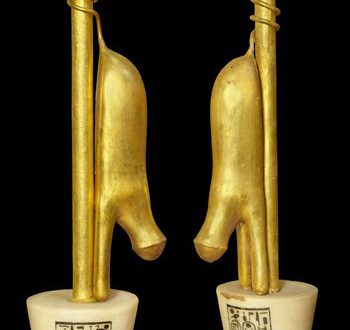Bergama, Turkey is a city in the west of the country, located near the Bakray river and is home to the ruins of the Roman city of Pergamon (or Pergamum), which lie to the north and west of the modern day site. The ancient city is believed to have had a population of around 150,000 people at its peak in the First Century AD. Thanks to GeoEye who have provided a high resolution satellite image of the region, we can see the relationship between the modern city and its ancient past.
Of all the amazing sites in the area surrounding Bergama, it is just as important to note the missing piece – The Zeus Altar, also known as the Pergamon Altar. Hosted in the Pergamon Museum, Berlin, this amazing example of Hellenic art depicts scenes from ‘Gigantomachy’ – the battle of the Greek gods against the giants. The story of how this stunning piece of architecture ended up in Germany is a remarkably similar tale to how the Elgin Marbles ended up in the British Museum, and you can read about it (as well as viewing a slideshow of the Pergamon Altar) in Jon’s blogpost.
Can you spot any famous sites in the map below? The following landmarks are all in there:
The Acropolis of Pergamon was built by Commander Eumenes II, who had taken the Acropolis of Athens as an precedent for his new design, and upon completion, adorned it with fine arts and decor, making it one of the most beautiful places the world had seen. The Acropolis of Pergamon is home to several key sites, such as Temples to Athena, Zeus and Trajan, a theatre, the Queen’s Gardens and military barracks.
|
|
Click the (+) and (-) buttons to zoom in and out of this image, or double click.
Drag the image with your mouse to move to a different area.
The road to the Acropolis begins with a Gate, which leads up to the Lower Agora. The surrounding buildings contained a gymnasium and Roman baths, as well as Temples dedicated to Hera and Demeter.
To the south-west of the city is the Theatre of Pergamon, which has one of the steepest inclines of any built by the Romans. Built in the 3rd Century BC, it has a capacity of up to 10,000 people. Nearby is the Asklepieion complex, with the Temple of Asklepius, a library, a round building and a Propylon.
You can read more about Pergamon Altar Frieze here on Heritage Key, as well as the hot debate over it being kept in Berlin, Germany.
The Satellite Image is courtesy of GeoEye.



